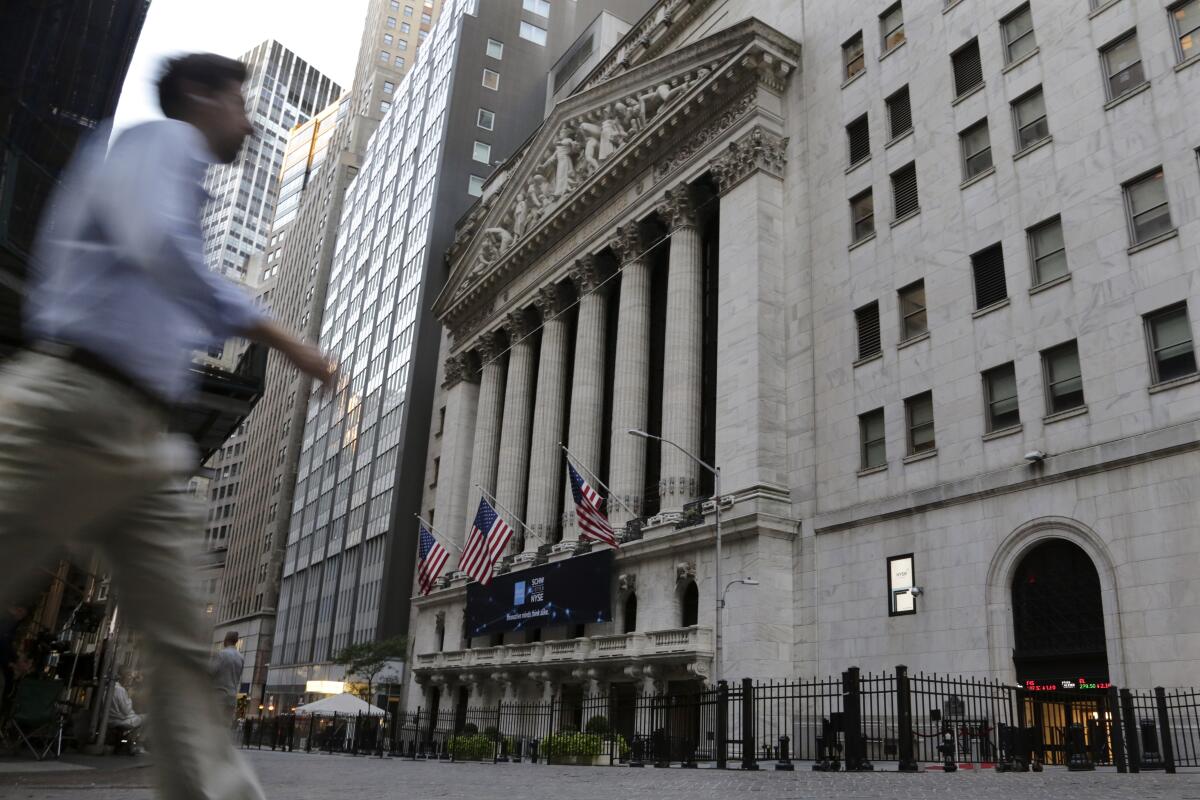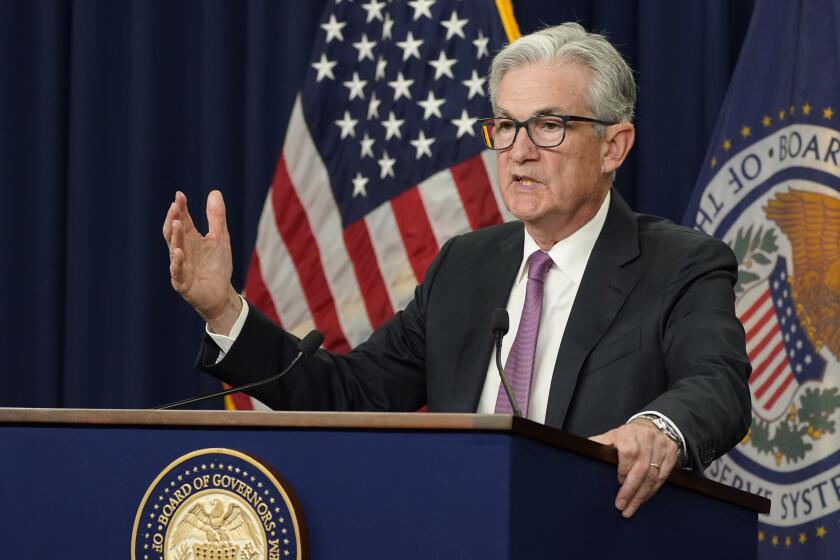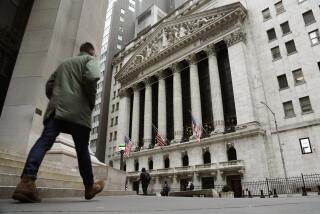Stocks slump on Wall Street as Fed steps up inflation fight

- Share via
Stocks closed sharply lower Wednesday after the Federal Reserve made another big interest rate increase and sharply raised its outlook for how high it expects to boost rates in coming months.
Short-term Treasury yields pushed further into multiyear highs after the central bank raised its short-term rate by three-quarters of a percentage point. The Fed also said it now expects its benchmark rate to be a full percentage point higher by the end of the year than it had predicted in June.
“We have got to get inflation behind us,” Fed Chair Jerome H. Powell said during a news conference. “I wish there were a painless way to do that. There isn’t.”
The Standard & Poor’s 500 fell 1.7% to its lowest level since mid-July after wavering between gains and losses as traders considered the Fed’s decision on interest rates, which have widespread effects on markets and the economy.
The Dow Jones industrial average also fell 1.7% after flipping between gains and losses. The Nasdaq composite lost 1.8%. The major indexes are on pace for their fifth weekly loss in six weeks.
Mortgage interest rates have climbed steadily for the last six weeks, despite the unwavering message from the Fed about its plans. Evidently, markets are starting to take that message seriously.
The yield on the two-year Treasury, which tends to follow expectations for Fed action, rose to 4.02% on Wednesday from 3.97% late Tuesday. It is trading at its highest level since 2007. The yield on the 10-year Treasury, which influences mortgage rates, fell to 3.52% from 3.56%.
The Fed is raising rates to fight the worst inflation in 40 years. The worry is that the Fed may cause a recession by slowing the economy too much.
“Ultimately, the policy appears to be appropriate given the economic backdrop, but investors should prepare for rough seas ahead as aggressive Fed policy usually leaves a path of destruction,” said Charlie Ripley, senior investment strategist at Allianz Investment Management.
The S&P 500 fell 66 points to 3,789.93, the Dow slid 522.45 points to 30,183.78, and the Nasdaq lost 204.86 points to close at 11,220.19.
Smaller-company stocks also slumped. The Russell 2000 index fell 25.35 points, or 1.4%, to 1,762.16.
Economically speaking, the vibes are off. Here’s what you should be doing with your money, according to financial experts.
The broader market had been lurching between gains and losses throughout the week ahead of the latest update on interest rates from the Fed.
More than 90% of the stocks in the S&P 500 fell, with retailers, banks and technology companies among the heaviest weights on the benchmark index. Amazon dropped 3%, Bank of America shed 3% and Apple fell 2%.
The Fed has been raising rates aggressively to try to tame high prices on a variety of items, including food and clothing.
During his news conference, Powell emphasized his resolve to lift rates high enough to slow the economy and drive inflation back toward the central bank’s 2% annual goal. Powell said the Fed has just started to get to that level with this most recent increase.
The central bank’s latest rate hike lifted its benchmark rate, which affects many consumer and business loans, to a range of 3% to 3.25%, the highest level in 14 years, and up from zero at the start of the year.
Southern California home prices were unchanged in August from a month earlier as rising mortgage rates made houses even less affordable.
“The Fed is pivoting, but not in the direction that many hoped for,” said Willie Delwiche, investment strategist at All Star Charts. “Not only are they indicating that rates will be higher for longer but they expect to persist even as the economy slows more dramatically.”
The Fed’s goal is to slow economic growth and cool inflation, but Wall Street is worried that it could hit the brakes too hard on an already slowing economy and cause a recession. Those concerns have been reinforced by reports showing that inflation remains stubbornly high and statements from Fed officials that they will keep raising rates until they are sure inflation is coming under control.
Central banks worldwide are also dealing with inflation. The Bank of Japan began a two-day monetary policy meeting Wednesday, although analysts expect the central bank to stick to its easy monetary policy. Rate decisions from Norway, Switzerland and the Bank of England are next. Sweden surprised economists this week with a full-point hike.
Global tensions remain high as Russia’s invasion of Ukraine continues. Russian-controlled regions of eastern and southern Ukraine have announced plans to start voting this week to become part of Russia. The war has killed thousands of people, driven up food prices worldwide and caused energy costs to soar.
Gasoline prices, which helped fuel inflation for months, have been generally falling. But the average price for a gallon of gas went up for the first time in more than three months, rising to $3.681 on Wednesday from $3.674 the day before, according to AAA.
Cruise line operators slipped as Hurricane Fiona continued to batter the Caribbean. Carnival slid 6.8%.
More to Read
Inside the business of entertainment
The Wide Shot brings you news, analysis and insights on everything from streaming wars to production — and what it all means for the future.
You may occasionally receive promotional content from the Los Angeles Times.













